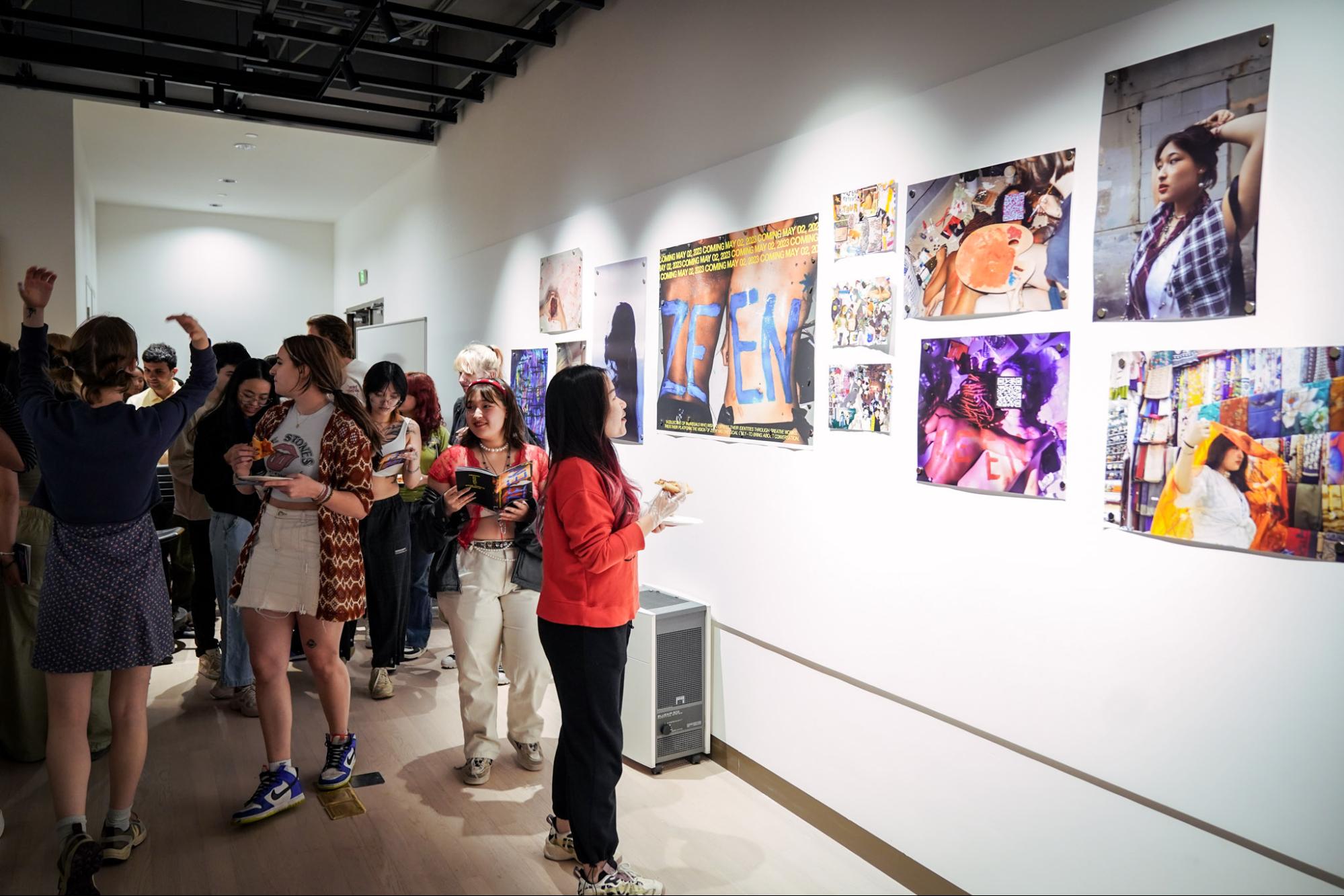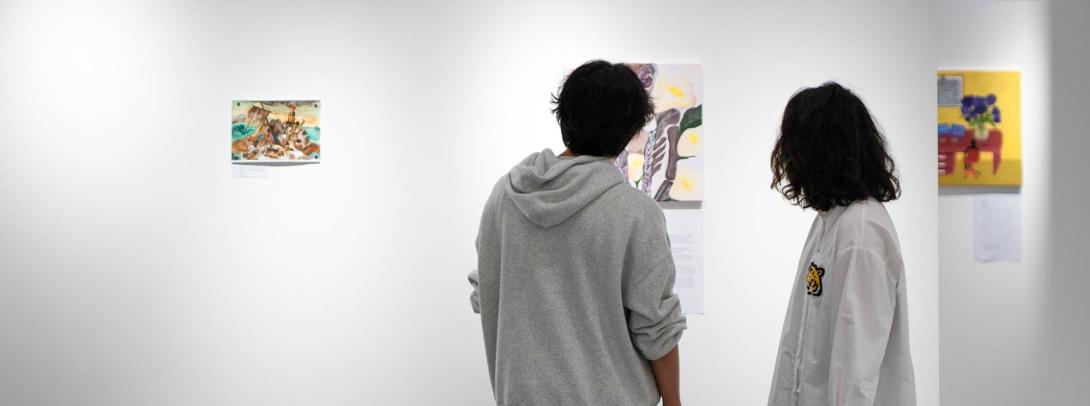Occupying three different spaces on NYU Shanghai’s new Qiantan campus, the Visual Arts program provides access to art equipment — brushes, paints, and palettes — alongside state-of-the-art technology. Read below for an overview of each space and learn about the resources available to help you channel your creative side on campus!
Visual Arts Studio (N301)
Featuring two printmaking presses, a wide array of paints, an abundance of tools, and great natural light, the studio provides the perfect environment for students to tap into their creative potential. This spacious room serves other functions too. Classes like The Graphic Novel meet here throughout the week, and Visual Arts professors hold in-class exhibitions using the room’s spotlights and magnetic walls (or rafters, in the case of sculptures). Professors can even adjust the ceiling lights to give students the best possible viewing experience. “The ‘skylights’ help students understand how lighting conditions are critical to making impactful work,” says Clinical Assistant Professor of Arts Maya Kramer, who helped design the space. “It’s a great space where students can feel inspired to create,” she says.
The space is also ideal for student activities. It currently hosts meetings for the Visual Arts Club and Writing Club, and ZEEN, a new student publication, recently held its launch event here. The studio remains open on weekday evenings for those enrolled in Visual Arts classes, making it a good spot for quiet study. “The art studio provides me with a dedicated space to work and it's free of distractions,” says Vicky Chen ’26, who used the space to work on projects for Kramer’s Foundations in Painting class this semester. While the surest way to gain access to the tools in the studio is by enrolling in a Visual Arts class, equipment is also available for reservation by contacting the Visual Arts Studio Coordinator.

Assistant Arts Professor of Visual Arts Monika Lin’s course The Graphic Novel meets in the Visual Arts studio.

The launch event for ZEEN, a new student publication.
Digital Printing Studio (EB119)
Photography enthusiasts will fall in love with the state-of-the-art Digital Printing Studio. At its heart is an Epson SureColor P8080, an inkjet printer that supports high-quality, extra-large prints up to 44 inches in width. Students who are enrolled in Assistant Arts Professor of Visual Arts Alice Wang’s photography courses may use the studio to print their works for class. Image adjustments can be made using Photoshop on either an iMac or a BenQ monitor, the latter of which supports a wider range of color space and comes with a hood to block light glare. Students may use a viewing table to closely assess their printed works under special lighting before heading to the cutting station for final preparations. Once complete, prints can be hung for display or shared digitally using the Epson scanner. Wang says the studio space offers more than just technical tools. “It is also a space for the community of students in my Photography class to converge, work together, and be inspired by each other,” she says. “The rapport my students have generated with each other in the class can very much be felt in their final projects.” Those pieces will be on display next week in an exhibition in the Visual Arts Gallery. Open hours for the Digital Printing Studio are every Tuesday evening and Wednesday morning for photography students, and the space is open for reservations throughout the week.


Top left: The cutting station. Top right: The BenQ workspace. Bottom: Student prints on display in the Digital Printing Studio.
Visual Arts Gallery (East Block, B2)
A short walk from the cafeteria, the Visual Arts Gallery is a great place to wander among art. Magnetic walls display student work under exhibition-level lighting, complete with wall labels for each piece. Any school organization, whether a class or a student club, may book one of the gallery’s two spots by contacting the Visual Arts Studio Coordinator.

Students at the opening reception for the Foundations in Painting class exhibition.

Students admire a painting by Vicky Chen ’26.
The gallery has already begun to host celebratory exhibitions for Visual Arts classes, and will continue to do so until the end of the semester. The exhibition for Kramer’s Foundations in Painting course will last until Sunday, to be followed by a showcase of student work from Wang’s Photography I course. Also be sure to head to the main auditorium on May 8 for a screening of student films from Wang’s Moving Images I class.


